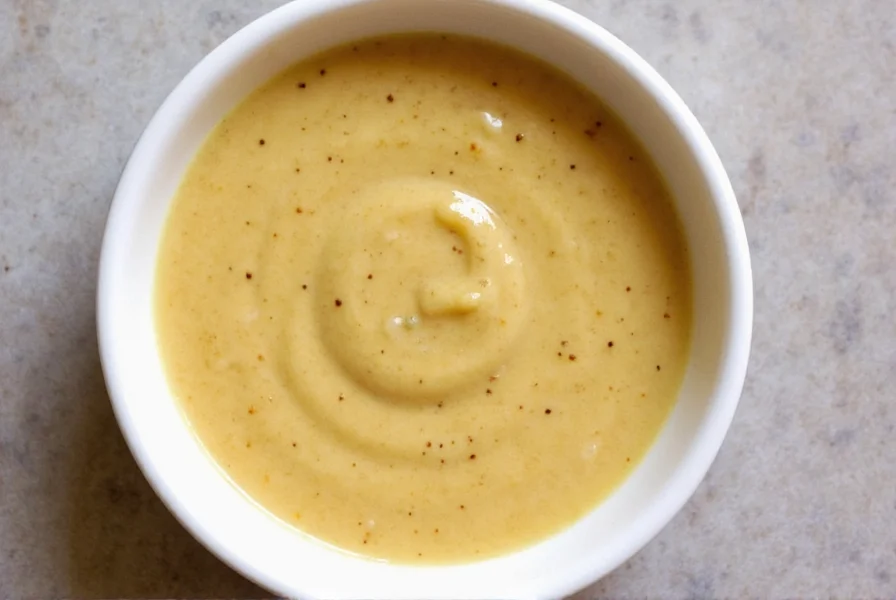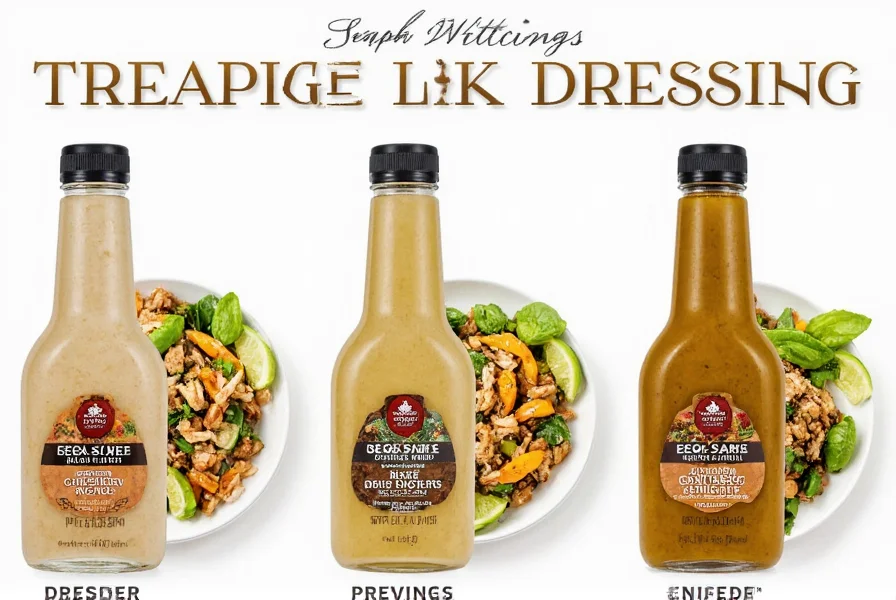When crafted properly, sesame ginger dressing creates an emulsion that clings beautifully to greens and vegetables. The magic happens through the combination of toasted sesame oil's nutty depth, freshly grated ginger's zesty warmth, and the balancing act between acidity from rice vinegar and sweetness from natural sweeteners. Unlike many store-bought versions loaded with preservatives and excess sugar, homemade sesame ginger dressing allows you to control ingredients and create a fresher, more vibrant flavor profile.
Core Ingredients and Their Essential Roles
Understanding each component's function helps you master this dressing. Authentic sesame ginger dressing relies on specific ingredients working in harmony:
| Ingredient | Function | Quality Tip |
|---|---|---|
| Toasted sesame oil | Provides distinctive nutty aroma and rich base | Use 100% pure toasted variety, not regular sesame oil |
| Fresh ginger | Delivers bright, spicy warmth and digestive benefits | Microplane grater creates best texture and flavor release |
| Rice vinegar | Offers mild acidity that balances richness | Unseasoned variety prevents unwanted sweetness |
| Low-sodium soy sauce | Contributes umami depth and saltiness | Substitute tamari for gluten-free option |
| Natural sweetener | Counteracts acidity and enhances complexity | Honey, maple syrup, or date syrup work best |
Traditional vs. Modern Variations
While traditional Asian preparations focus on simplicity, contemporary interpretations have expanded the possibilities. Classic versions maintain a 3:1 oil-to-vinegar ratio with minimal sweetener, reflecting Japanese and Korean culinary traditions. Modern adaptations often incorporate additional elements like citrus zest, garlic, or chili for complexity.
For those exploring homemade sesame ginger dressing recipe options, consider these variations:
- Classic Japanese-style: Focuses on delicate balance with minimal sweetener and higher rice vinegar content
- Korean-inspired: Incorporates gochujang for subtle heat and depth
- Vegan sesame ginger dressing: Uses maple syrup instead of honey and ensures gluten-free soy alternatives
- Creamy version: Blends in tahini or avocado for richer texture without dairy

Perfect Pairings Beyond Basic Salads
While many search for the best sesame ginger dressing for Asian salads, its versatility extends far beyond leafy greens. This dressing excels as a marinade, dipping sauce, and flavor enhancer for various dishes:
- Grain bowls: Drizzle over quinoa or brown rice bowls with roasted vegetables
- Protein marinade: Works exceptionally well with chicken, salmon, or tofu (marinate for 30-60 minutes)
- Slaw dressing: Creates vibrant cabbage or broccoli slaws with excellent staying power
- Dipping sauce: Perfect for spring rolls, dumplings, or roasted vegetable sticks
- Noodle dressing: Toss with cold soba or rice noodles for instant Asian-inspired salad
Homemade vs. Store-Bought Analysis
Commercial versions often contain stabilizers, excess sugar, and lower-quality oils. When evaluating sesame ginger dressing ingredients on labels, watch for:
- High-fructose corn syrup or excessive added sugars (often 5+ grams per serving)
- Vegetable oils instead of pure sesame oil
- Artificial preservatives like potassium sorbate
- Vague terms like "natural flavors"
Creating your own sesame ginger dressing from scratch takes just 10 minutes and ensures you control every component. The basic ratio is 3 parts oil to 1 part acid, with ginger and seasonings to taste. For a standard batch, combine:
- ¼ cup toasted sesame oil
- 2 tablespoons rice vinegar
- 1 tablespoon soy sauce or tamari
- 1 tablespoon honey or maple syrup
- 1½ tablespoons freshly grated ginger
- 1 small garlic clove, minced (optional)
- 1 teaspoon sesame seeds
Whisk vigorously or shake in a sealed jar until emulsified. The fresh ginger provides not only flavor but also digestive benefits and anti-inflammatory properties that processed versions lack.
Dietary Adaptations and Storage Tips
For those seeking gluten-free sesame ginger dressing, simply substitute tamari for soy sauce. Vegan versions replace honey with maple syrup or date syrup. To maintain optimal flavor and safety:
- Store in airtight container in refrigerator for up to 1 week
- Shake well before each use as separation is natural
- Freeze in ice cube trays for longer storage (up to 3 months)
- Always use clean utensils to prevent contamination
Understanding proper sesame ginger dressing storage tips prevents waste and maintains flavor integrity. The fresh ginger and garlic mean homemade versions have a shorter shelf life than commercial products with preservatives.
Creative Applications for Culinary Enthusiasts
Move beyond basic salad applications with these innovative uses for your sesame ginger dressing for grilled meats:
- Mix with Greek yogurt for a protein-packed salad dressing alternative
- Drizzle over roasted Brussels sprouts during the last 5 minutes of cooking
- Use as a base for Asian-inspired potato salad
- Add to stir-fry at the end for extra flavor dimension
- Blend with avocado for a creamy sandwich spread
When experimenting with sesame ginger dressing substitutes, remember that each component serves a purpose. If you lack rice vinegar, apple cider vinegar makes an acceptable substitute at a 1:1 ratio, though the flavor profile will shift slightly. For those avoiding soy, coconut aminos provide a lower-sodium alternative with similar umami qualities.
Frequently Asked Questions
What's the difference between regular and toasted sesame oil in dressing?
Toasted sesame oil has a much stronger, nuttier flavor because the sesame seeds are roasted before extraction. Regular sesame oil is more neutral and better for cooking at high temperatures, while toasted sesame oil should be used only in dressings and finishing applications as heat destroys its delicate flavor compounds.
Can I make sesame ginger dressing without sugar?
Yes, you can create a sugar-free version by omitting sweeteners entirely, though the dressing will be more acidic. For better balance without sugar, try adding 1-2 tablespoons of unsweetened applesauce or a small amount of ripe banana puree, which provides natural sweetness while maintaining the dressing's integrity for those monitoring sugar intake.
Why does my homemade sesame ginger dressing separate?
Separation occurs because oil and vinegar naturally don't combine without an emulsifier. To improve stability, add 1 teaspoon of Dijon mustard or blend the dressing in a blender for 30 seconds. Always shake vigorously before use, as even well-emulsified dressings will separate over time due to the absence of commercial stabilizers.
How can I adjust sesame ginger dressing if it's too strong?
If the ginger flavor is overpowering, add additional oil (1 tablespoon at a time) to mellow the intensity. For excessive saltiness, incorporate more sweetener or a splash of water. If too acidic, increase the sweetener or oil component. Always adjust in small increments and allow 15 minutes for flavors to meld before making further adjustments.











 浙公网安备
33010002000092号
浙公网安备
33010002000092号 浙B2-20120091-4
浙B2-20120091-4